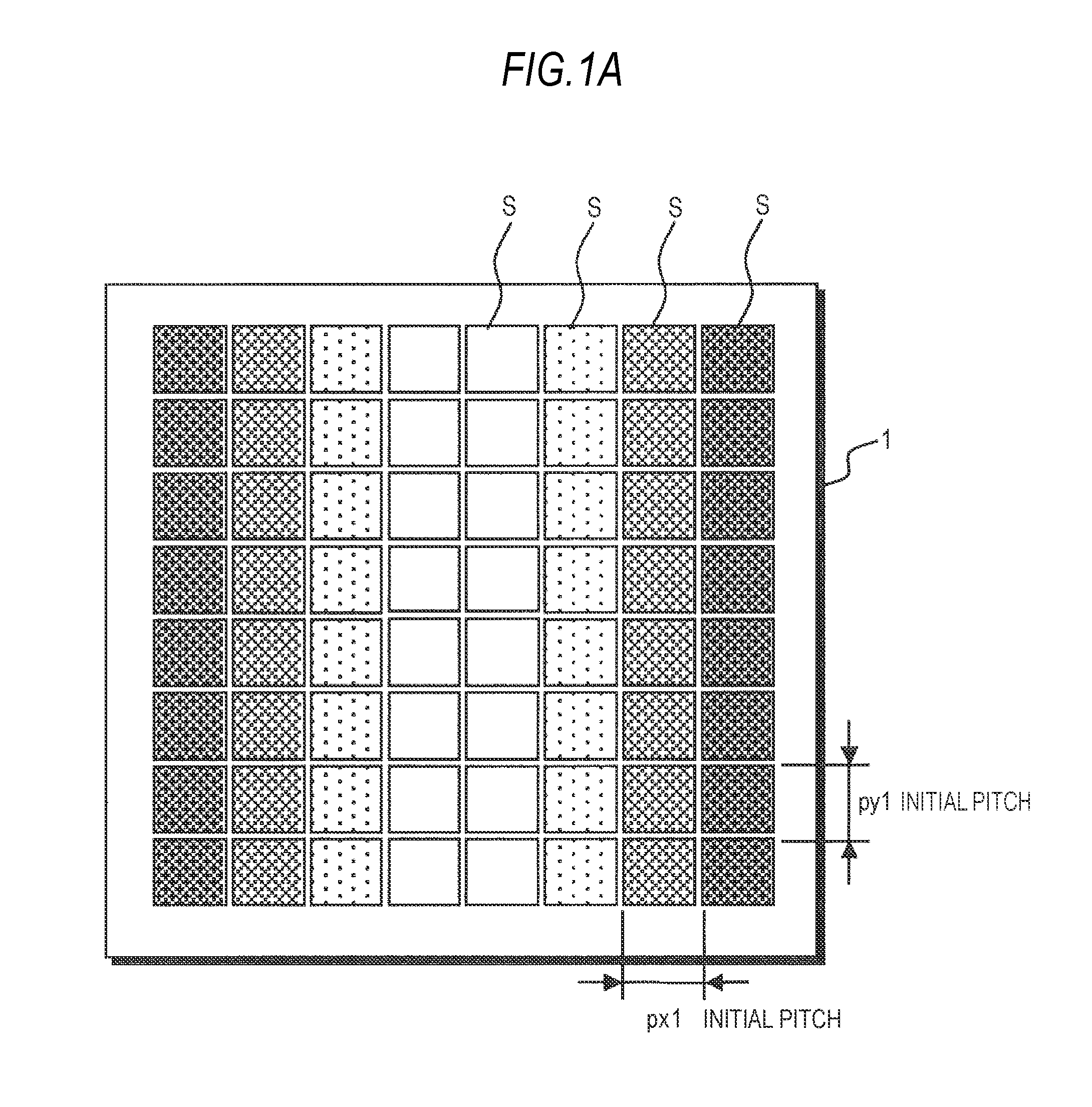Manufacturing method of display device and display device
a display device and manufacturing method technology, applied in the manufacture of electrode systems, electric discharge tubes/lamps, discharge tubes luminescnet screens, etc., can solve the problems of color unevenness, uneven brightness, and difficulty in completely uniformly keeping the temperature distribution of growth substrates, and achieve excellent display quality.
- Summary
- Abstract
- Description
- Claims
- Application Information
AI Technical Summary
Benefits of technology
Problems solved by technology
Method used
Image
Examples
first embodiment
[0059]FIG. 1A to FIG. 1C are step views showing feature parts of a manufacturing method of a display device according to a first embodiment of the invention. Here, based on these drawings, a description will be made on a method of mounting light-emitting elements from a first substrate onto a second substrate in manufacture of a display device in which light-emitting elements such as light emitting diodes (LEDs) are arranged in matrix form.
[0060]Here, the first substrate is, for example, a growth substrate on which the light-emitting elements are formed or a holding substrate onto which the light-emitting elements formed and arranged on the growth substrate are temporarily mounted. The second substrate is a device substrate (wiring substrate) on which wiring or the like is provided, or a hold substrate onto which the light-emitting elements are temporarily mounted.
[0061]A description will be made on a procedure in which light-emitting elements arranged on the first substrate at init...
second embodiment
[0093]FIG. 2A to FIG. 2C are step views showing feature parts of a manufacturing method of a display device according to a second embodiment of the invention. The second embodiment is an applied example of the first embodiment. Hereinafter, similarly to the first embodiment, a method of mounting light-emitting elements from a first substrate onto a second substrate in manufacture of the display device will be described with reference to these drawings.
[0094]First, as shown in FIG. 2A, an in-plane distribution of emission characteristics (here, emission wavelength), such as chromaticity of emitted light or brightness, is detected with respect to plural light-emitting elements S arranged on the first substrate 1 at specified initial pitches px1 and py1.
[0095]By this, as indicated by the shading representing the emission characteristics of the respective light-emitting elements S, it is detected that the light-emitting elements S are arranged on the first substrate 1 in the distributio...
third embodiment
[0116]FIG. 3A to FIG. 3C are step views showing feature parts of a manufacturing method of a display device according to a third embodiment of the invention. Similarly to the first embodiment, a method of mounting light-emitting elements from a first substrate onto a second substrate in manufacture of the display device will be described with reference to these drawings.
[0117]First, as shown in FIG. 3A, an in-plane distribution of emission characteristics (here, emission wavelength), such as chromaticity of emitted light or brightness, is detected with respect to plural light-emitting elements S arranged on a first substrate 1 at specified initial pitches px1 and py1.
[0118]By this, as indicated by the shading representing the emission characteristics of the respective light-emitting elements S, it is detected that the light-emitting elements S are arranged on the first substrate 1 in the distribution where the emission characteristics are radially monotonously changed in one directi...
PUM
 Login to View More
Login to View More Abstract
Description
Claims
Application Information
 Login to View More
Login to View More - R&D
- Intellectual Property
- Life Sciences
- Materials
- Tech Scout
- Unparalleled Data Quality
- Higher Quality Content
- 60% Fewer Hallucinations
Browse by: Latest US Patents, China's latest patents, Technical Efficacy Thesaurus, Application Domain, Technology Topic, Popular Technical Reports.
© 2025 PatSnap. All rights reserved.Legal|Privacy policy|Modern Slavery Act Transparency Statement|Sitemap|About US| Contact US: help@patsnap.com



